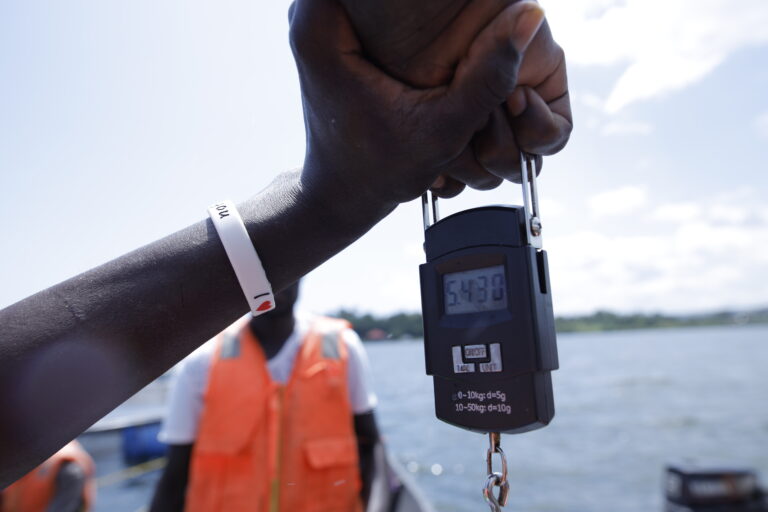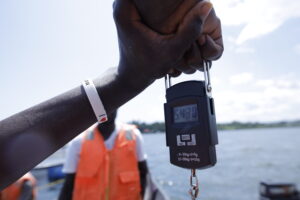Aquaculture is becoming one of the cornerstones of the Agricultural-based economy of Uganda and the East African region. With the increased demand for fish protein coupled with depleting wild fish stocks in Lake Victoria and other water bodies, aquaculture offers great opportunities in sustainable food production and income generation. Aquaculture alone contributes about 100,000 metric tons annually to the production of fish in Uganda and is projected to reach 300,000 metric tons by the year 2030. All this is achievable only if there is not only expansion but equally effective farm management practices and proper record keeping to ensure profitability and efficiency in the operation, coupled with sustainability.
Poorly managed farms and a lack of adequate record keeping aquaculture result in many missed opportunities for better productivity. With proper management in place, farmers can be able to observe water quality, the health of the fish, feeding schedules of the fishes, among others, to avoid losses and improve their yields. Record keeping is very important, especially because the majority of farmers in Uganda’s aquaculture space are of a small and medium-scale scale of production, thus enabling them to monitor feed usage, track the performance of stock, and manage the operational cost.
We share in this blog some key considerations for managing fish farms, from expert insights to the best practices that can help you achieve maximum farm productivity and profitability without compromising the integrity of the environment.
The importance of farm management and record keeping
Running a fish farm is much more than feeding fish and harvesting them for sale. It involves precise management of water quality, feeding, disease control, and overall environmental conditions to ensure fish grow efficiently and stay healthy. Proper record keeping is crucial to tracking progress, identifying problems early, and optimizing every aspect of farm operations. It’s a tool for measuring and improving farm performance, ensuring long-term success.
Major principles of fish farm management
The general view is that effective fish farming should focus on the core aspects of water quality management, stock management, disease prevention, and maintenance of the pond, cages or tank.
a) Water quality management
In fish farming, few factors are as crucial as the quality of the water. Poor water conditions can make fish become stressed or stop growth and even result in deaths. Here’s what to monitor:
– pH Levels: Fish do better in water in which the pH level is balanced. Most of the fish have an optimum pH range between 6.5 and 8.0. The water will need to be tested on a regular basis to keep it within this range.
– DO-Dissolved Oxygen: Fish need oxygen to survive. The low oxygen in the water can suffocate your fish. Maintaining the DO level above a minimum of 5 mg/L. Aeration systems or changing of water will help maintain healthy oxygen levels in the water.
– Ammonia and Nitrite Levels: Fish wastes and uneaten food can generate substantial levels of ammonia and nitrites, substances that are toxic. Testing of the water regularly will prevent such unsafe levels from building up.
– Temperature: The optimum temperature requirement varies between different species of fish. In addition, monitoring and maintaining temperature is more crucial in intensive farming.
b) Stock management
Good stock management means good fish growth and optimized work of the farm. Important factors are;
– Stocking Density: Stocking density is related to stress and outbreaks of diseases. The appropriate stocking density depends on the species and the size of the water body.
– Feeding Practices: Proper feeding schedules and high-quality feeds are crucial to fish growth. Overfeeding increases waste and lowers water quality, while underfeeding slows the growth rate of fish.
– Fish Type Selection: Different types of fish have different needs and requirements. Knowledge in the biology of the fish being raised (tilapia, catfish, or carp) will enhance feeding, water quality, and pond conditions.
c) Prevention of disease and management of health
Poor fish health can potentially cause huge losses in the fish farm. The best way to deal with this in fish farming is prevention through:
– Regular Health Check-Up: Make it a habit to observe your fish regularly for the initial steps in diagnosing diseases. The fish should have quality feed, clean water, and appropriate stocking density.
– Biosecurity Measures: Avoid the entry of germs by not allowing outside visitors into the facility without any protective gear and not sharing equipment between different ponds.
– Vaccination and Treatment: Sometimes, one needs vaccination. Record treatments and medications carefully for following up on the effectiveness of the prescriptions given and also to avoid overmedication.
d) Pond and tank maintenance
Proper caring of ponds and tanks will let your fish grow in the best possible environment.
– Pond Preparation: Clean the ponds or tanks well before adding fish. Application of lime is very important to balance the acidic soils, kill parasites and create good conditions for the fish.
– Sludge Removal: Sludge buildup happens from fish waste and leftover food, which can harm water quality. Regularly removing sludge helps keep a healthier environment for the fish.
– Water Exchange: Changing the freshwater can remove toxins and give back good quality water. This may need to be done from time to time at the farm to maintain clean and oxygen-rich water.
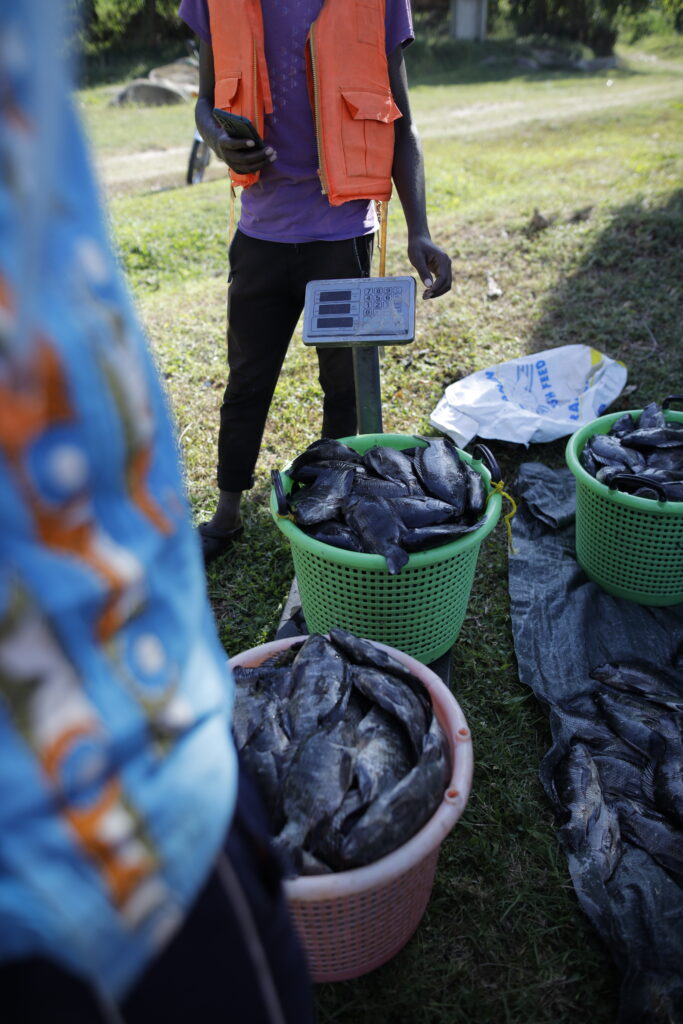
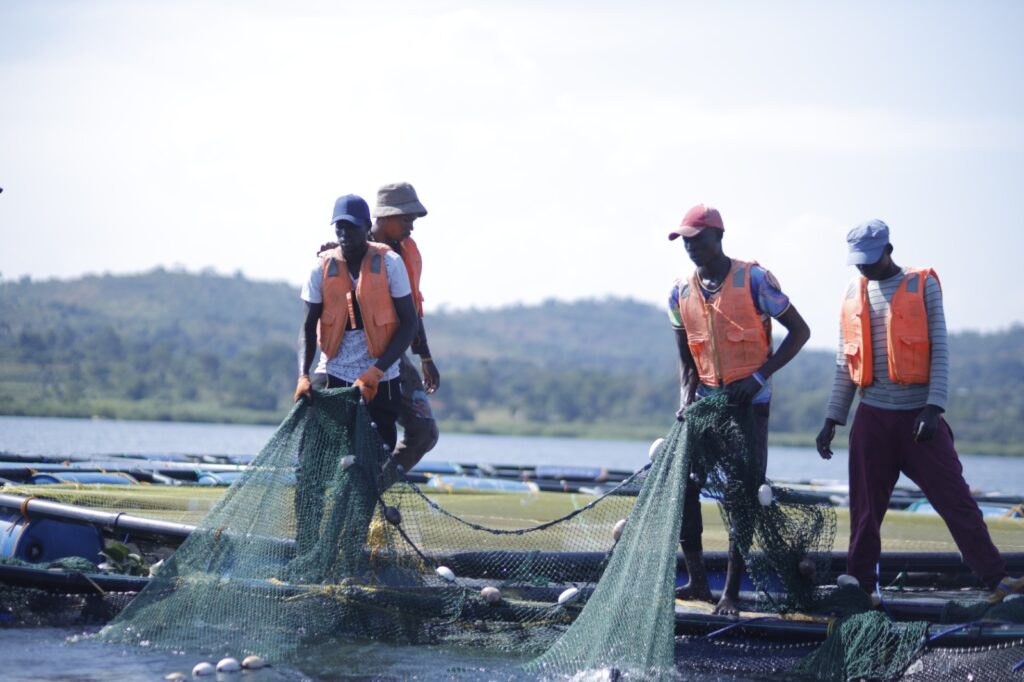
Reasons for record keeping in fish farming
Unfortunately, record keeping has been underestimated by most fish farmers. However, it is considered one of the most powerful practices that help improve farm performance and decision-making, and here is why;
a. Fish growth and Feed efficiency monitoring
A farmer will be able to monitor farm performance based on fish growth, consumption of feed by the fish, and feeding patterns. This includes establishing the feed conversion ratio of fish at different growth stages, which in turn helps in establishing how much feed your fishes will need to attain a certain weight. The lower the FCR, it means you are efficient in the use of feeds; this saves you money and increases your profits.
b. Facilitates early detection of problems in farm
Recordkeeping of water quality, fish health, and feed use shows you the beginnings of a problem so that a deterioration does not get out of hand. By the time you see poor water quality or the beginning of sick fish you will have time to act to rectify the problem and reduce losses.
c. Compliance and Auditing
Keeping proper and up-to-date records of the farm helps you observe the law, and in case of an inspection or audit, it’s easier. Good Financial Management shows you the cost of feeds, the cost of equipment, and sales that would help you see the financial activity of your farm. In so doing, you will be capable of budgeting properly, seeking ways of cost-cutting, and preparing for future business expansion.
Types of farm records
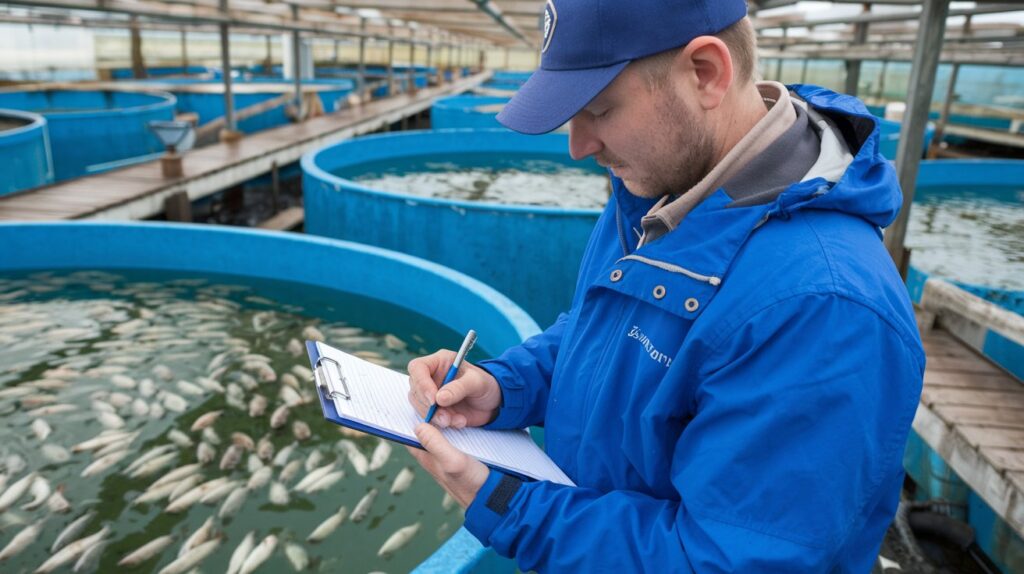
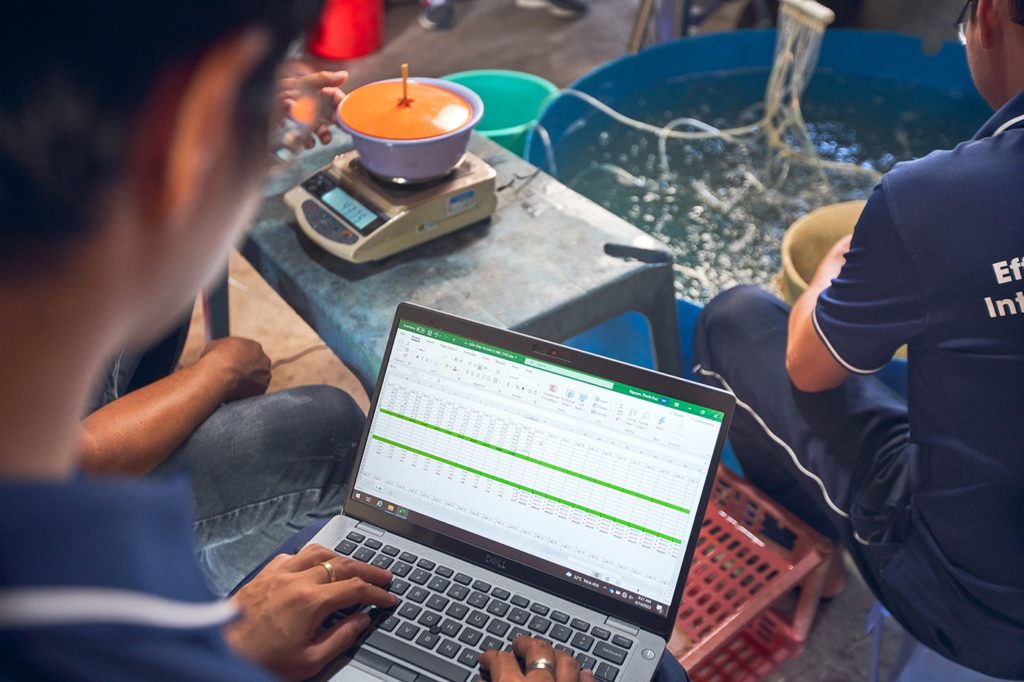

Good record keeping entails records of various types, covering all aspects of the farm’s activities.
1. Production records
– Data on Stocking: Record the date, number of fish stocked, species, and weight. It is useful for population monitoring and assessing future growth trends.
– Growth and Harvest Records: Record over time the size, weight, and health of fish. This informs you on the growth rate of fish to know when is the best time for catch.
– Harvest and Sales Record: Record number of fish harvested, average weight, and sale prices. These records are fundamental for analyzing farm profitability.
2. Financial records
– Operating Costs: Against feed costs, a record should be kept of equipment, labor, pond care, and other supplies. It aids the person in planning how he will spend on the farm.
– Sales and Revenue: Record every sale by specifying the buyer, quantity sold, and the revenue received. This would help in judging profitability and comparing the earnings over time.
3. Environmental and Health records
These are crucial in terms of keeping your fish healthy and disease-free.
– Water Quality Records: Record in the chart the respective routine water quality measurements of pH, DO, ammonia, nitrites, and temperature.
– Health and Treatment Records: Keep clear and distinct records concerning outbreaks, treatments, and vaccinations. It aids in monitoring the pattern of diseases and improvements in biosecurity.
How to set-up a good record keeping system
Record keeping can be overwhelming at the start, but once the system is found that works for you, it’s much easier. Here’s how to do it;
1. Choosing the right tools
Fish farmers can pick between manual (hand-written) and digital ways to keep records;
– Manual Systems: These are logbooks or notebooks where records are written by hand. As much as they tend to be cheap, they are very prone to errors or loss, especially in large farms.
– Digital Systems: Digital tools, such as Excel spreadsheets or specialized aquaculture software like AquaManager and Aquanetix-operate are better to organize and store data. These also help you create reports and look at trends more quickly and in easy to interpret formats.
2. Template customization
You can create templates which suit your farm’s requirements. You could have separate templates for daily water quality checks, weekly growth records, and monthly summaries of finances. These templates help keep information well organized and normalized.
3. Training farm workers
If you employ staff, ensure that they understand how to take and maintain proper records. Allocate responsibilities to staff for various duties and monitor records regularly for their accuracy. Regular training allows everyone to appreciate why data entry should be accurate.
Records for better decision making
After you have put an effective recordkeeping system in place, you will be able to use the information from your records to make better decisions for your farm.
a. Optimization of growth and feeding
With growth and feed efficiency recorded, you are able to adjust feeding schedules and stocking densities to allow for the best growth rates without overfeeding fish. This helps with your FCR and cuts down on unnecessary expenses.
b. Finances
Use financial records to track your budget and analyze profitability. If the expenses go up, you will be able to tell why and specify where you are able to cut costs. Changing to a more affordable feed supplier or optimizing everyday efficiency could be the alternative options.
c. Disease control
In fact, detailed health records can even help in determining the pattern of disease outbreaks. For instance, if it is known that certain fish species develop diseases during specific months of the year, then you may well plan in advance and undertake precautionary measures such as providing improved water quality or even vaccination.
Overcoming challenges in Record keeping
– Set Regular Record-Keeping Times: Establish a time for recording data whether at the end of the day or week. This makes certain that data doesn’t build up and get out of hand.
– Make Backups: Always keep a backup for your records in case you are on digital systems. Use cloud storage or an external drive to protect against data loss.
– Audit Your Records: Periodically make it a point to go through the records and update them so that they are accurate and current. This will also help in identifying inconsistencies and mistakes.

